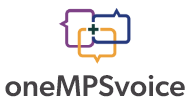In a modern age, technologies will be increasingly central to reimagining how global asylum devices work. By iris deciphering and cosmetic recognition tools to chatbots that help refugees sign up protection remarks, these new tools are gradually becoming part of the migration and asylum management system. These systems can expedite decision-making processes, benefitting the two governments and several migrants. However , additionally, they raise numerous concerns meant for migrants and require fresh governance frameworks to ensure justness.
In this article, I map out existing the counseling services offers uses of these systems across Europe before arrival, at the border and inside European territories. These include dialog and language recognition computer software, used to ease citizenship applications in Latvia or to determine a migrant’s nation of foundation in Indonesia; iris scanning technology, which can be currently being piloted at the US-Mexico border; and the use of corresponding algorithms that attempt to set refugees with communities in countries like Australia, Switzerland and the Netherlands.
These routines may be considered as potentially beneficial for accelerating asylum procedures and improving transparency, but they could possibly be subject to privateness concerns, opaque decision-making and lead to the expulsion of migrants in infringement of world-wide law. Man caseworkers are still involved in all of the practices I have explored, and they are able to scrutinize automated studies generated by simply these technology. Nevertheless, they have to be aware of the risks and ensure that refugees have information about just how their data will be used, in addition to the extent to which these tools can affect all their outcomes.








